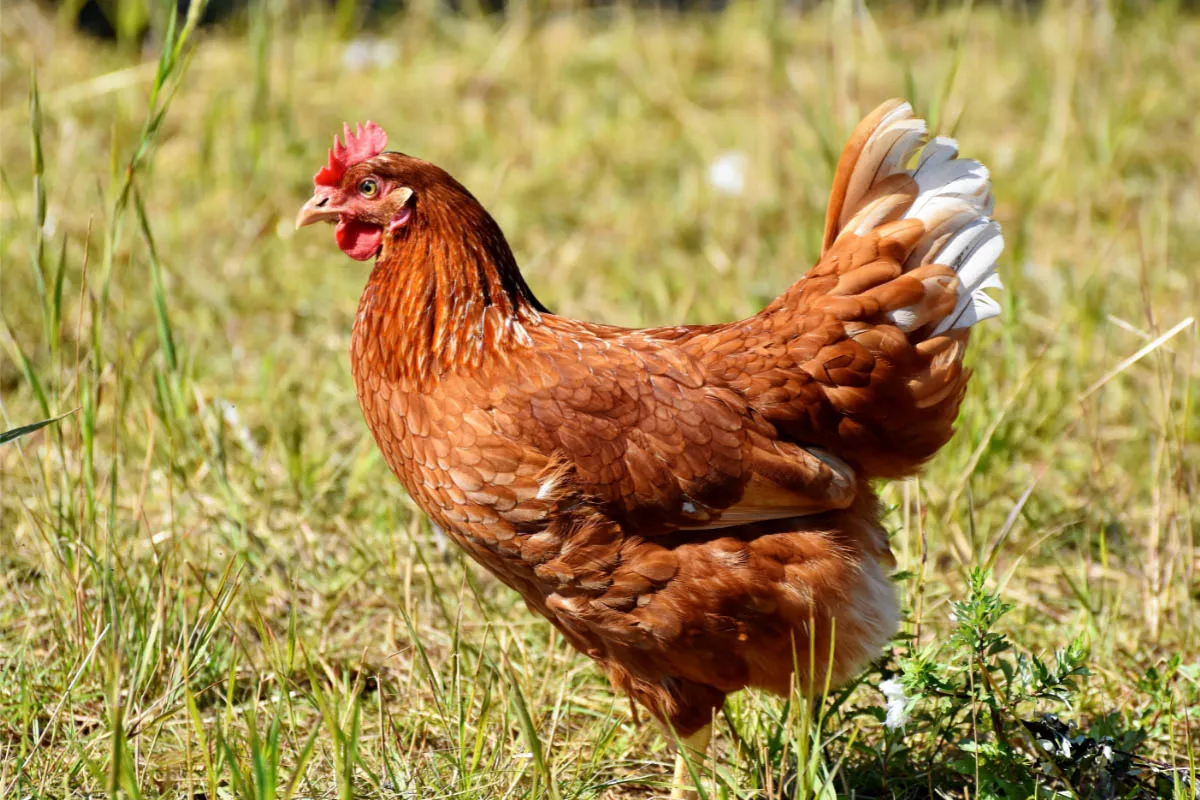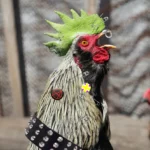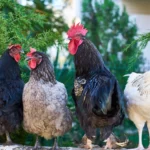Get ready to scratch beneath the surface and discover the curious world of chickens! These clucking wonders have a lot more going for them than you might think. Uncover their secret skills, from their colorful vision to their dream-filled naps. You’ll be amazed as we unveil the fascinating traits of these feathered friends, revealing their intelligence, chatty nature, and impressive athleticism. Join us on an unforgettable journey into the coop, where chickens will show you why they’ve feathered their way into our hearts!
Interesting Facts About a Chicken
Chickens, with a world population clocking in at a whopping 25 billion, are more than just breakfast providers. These feathered friends boast some seriously cool quirks that go way beyond laying eggs.
Ever heard the saying “bird brain” used as an insult? Well, it definitely doesn’t apply here. Chickens can actually recognize up to 100 different faces, meaning they can probably remember you better than you remember your high school classmates! And just like us, they dream in full color. Imagine the crazy chicken dreams going on while they snooze!
While they might not be taking to the skies, these birds are surprisingly speedy on their feet. We’re talking a cool 9 miles per hour – about the same speed as Usain Bolt’s warm-up jog! Speaking of speed, did you know some hens can lay over 300 eggs a year? Talk about productivity! They keep those eggs perfectly prepped too, rotating them about 50 times a day.
Chickens aren’t just egg machines, though. They’re actually quite the social butterflies (or should we say, social chickens?). They have their own complex language using a mix of clucks, chirps, and body language. And forget high school drama, chicken society is all about the pecking order. This social hierarchy dictates everything from who gets first dibs on food to who gets the best napping spot.
Perhaps the most mind-blowing chicken fact? These everyday birds share a common ancestor with the mighty Tyrannosaurus Rex! It’s like finding out your pet hamster is related to a saber-tooth tiger. So the next time you see a chicken, remember: you’re looking at a descendant of dinosaurs, a creature of surprising intelligence, and a master of the coop.
Do you know that chickens dream too? And there are plenty of weird facts you might not know about them, such as weird chicken facts.
How Intelligent is a Chicken?
These feathered friends we call chickens are actually way smarter than we often give them credit for! They’re not just clucking and scratching around; they have a whole social scene going on, complete with complex communication. Think of it like their own secret language where different sounds and gestures convey specific messages, emotions, and even intentions. They’re not just saying “hi,” they’re saying “Hey, watch out for that hawk!” or “I found some tasty bugs over here!”
And get this – chickens can tell each other apart! They can recognize different faces, both human and fellow chicken. Not only that, but they also seem to display a basic understanding of empathy, reacting to the distress of their flock mates.
But it doesn’t stop at socializing. These birds have brains that can really surprise you. They’ve got impressive memories and are even capable of figuring out simple puzzles. Imagine this: studies have shown chickens can remember up to 100 different faces – that’s like remembering everyone you’ve ever met at a party, and then some! They can even learn to sort objects by their shapes and colors.
All of this makes you think twice about how we view chickens, doesn’t it? Their intelligence is a far cry from the “bird-brained” stereotype. It raises important questions about how we treat them, especially in those crowded factory farm settings where they don’t have much space or opportunity to express their natural behaviors. By understanding just how intelligent chickens truly are, we can start to build a better, more respectful relationship with these fascinating creatures.
What are the behavioral patterns of a chicken?
Chickens aren’t just feathered food factories; they’re complex creatures with surprising habits and social structures. Imagine a bustling community, full of squawks, clucks, and a pecking order stricter than your grandma’s dining table rules.
Love is in the Air (and Sometimes a Scuffle)
Roosters, known for their cock-a-doodle-doo wake-up calls, take their mating game seriously. They’ll strut, puff out their chests, and even engage in a brawl or two to win a hen’s attention. Hens, though, play it cool. They’re pickier about their partners and might even entertain the advances of several roosters before deciding.
Feathers Need Love Too: The Art of Preening
Ever noticed how chickens seem to spend hours grooming themselves? That’s called preening, and it’s not just about vanity. They meticulously pick and clean each feather, removing dirt, pesky parasites, and any debris that might have hitched a ride. This feather fussing also helps spread natural oils, keeping their plumage waterproof and in tip-top shape.
Dust Baths: It’s Not Just Dirt, It’s a Spa Day!
Who needs a bubble bath when you can have a dust bath? That’s right, our feathered friends love a good roll in the dirt. This dusty ritual helps them keep their skin clean, free from those pesky parasites, and their feathers in prime condition. Think of it as their version of a relaxing spa treatment.
On the Hunt for a Tasty Treat: Foraging Adventures
Chickens are natural-born foragers, always on the lookout for a tasty morsel. Their diet is surprisingly diverse, including plants, insects, and even the occasional small critter that crosses their path. They’re like tiny, feathered detectives, constantly investigating their surroundings for a delicious reward.
The Pecking Order: Rules of the Roost
Like any well-organized society, chickens have a social hierarchy – the famous (or infamous) pecking order. This system determines who gets first dibs on food, the best spots to roost at night, and even who gets to boss who around. It might seem a tad harsh, but this pecking order helps maintain peace and order within the flock.
Cluck, Squawk, Cackle: The Language of Chickens
Think chickens just make random noises? Think again! They have a whole vocabulary of clucks, squawks, and cackles, each with its own meaning. Whether it’s a warning about a predator, a call to gather the chicks, or a celebratory cackle after laying an egg, chickens communicate with a surprising range of sounds and body language.
Each Chicken, a Character: Embracing Individuality
Just like humans, every chicken has its own unique personality. Some are bold and adventurous, always the first to explore new territory. Others are shy and reserved, preferring the comfort of familiar faces. Some might even be mischievous pranksters, stealing treats and causing a ruckus in the coop.
Understanding Our Feathered Friends
Chickens, with their intricate behaviors and surprising depth, remind us that there’s often more than meets the eye. By observing their social interactions, their quirks, and their routines, we gain a deeper appreciation for these feathered creatures who grace our backyards and dinner plates.
What is the life cycle of a chicken?
So, we’ve covered the basics of chicken life, but let’s dive a little deeper into the fascinating journey these feathered friends go through. It’s really quite something!
From Tiny Embryo to Clucky Hen
Think about it – a chicken starts as just a tiny embryo tucked inside an egg. Pretty amazing, right? For about three weeks, the egg is like a cozy little incubator, providing everything the embryo needs to grow. Then comes hatching day! The chick, using a tiny egg tooth, pecks its way out of the shell. This little fluffball is a hatchling, and it needs lots of warmth and care as it gets used to the world outside the egg.
Over the next few weeks, the chick transforms. Feathers sprout, it finds its legs (sometimes literally, those first steps can be wobbly!), and it starts exploring, pecking at food, and figuring out the pecking order with its siblings. This is the chick stage, full of energy and curiosity.
As the weeks turn into months, the chick grows larger and begins to show signs of adulthood. This stage, called a pullet for females, is like the teenage phase. The pullet is almost fully grown and is getting ready for the most important job of all – laying eggs!
Finally, the pullet reaches full maturity and becomes a hen, ready to lay her own eggs and maybe even raise a brood of chicks. Roosters, on the other hand, focus on their role of protecting the flock and, well, being roosters! This adult stage is where chickens really shine, providing us with fresh eggs and adding their unique personalities to the farm or backyard.
Why does it matter?
Understanding a chicken’s life cycle is more than just fun facts. It helps us provide the right care at every stage, ensuring our chickens are healthy and happy. Just like human families, chicken families thrive when their needs are met, and that’s something worth crowing about!
FAQ
Q1: How many chickens are estimated to exist worldwide?
A1: There are approximately 25 billion chickens worldwide, surpassing the human population and any other bird species.
Q2: Are chickens truly flightless birds?
A2: Despite their reputation, chickens can run at impressive speeds of up to 9 mph, demonstrating their agility.
Q3: Do chickens have dreams?
A3: With their full-color vision, chickens experience dreams during sleep, providing insights into their cognitive abilities.
Q4: How many eggs can a hen lay in a year?
A4: Hens demonstrate a remarkable ability to rotate their eggs approximately 50 times daily, resulting in a staggering potential to lay over 300 eggs annually.
Q5: Are chickens intelligent creatures?
A5: Chickens possess intelligence comparable to primates, exhibiting sophisticated communication skills, deceptive behavior, and a range of emotions.
















